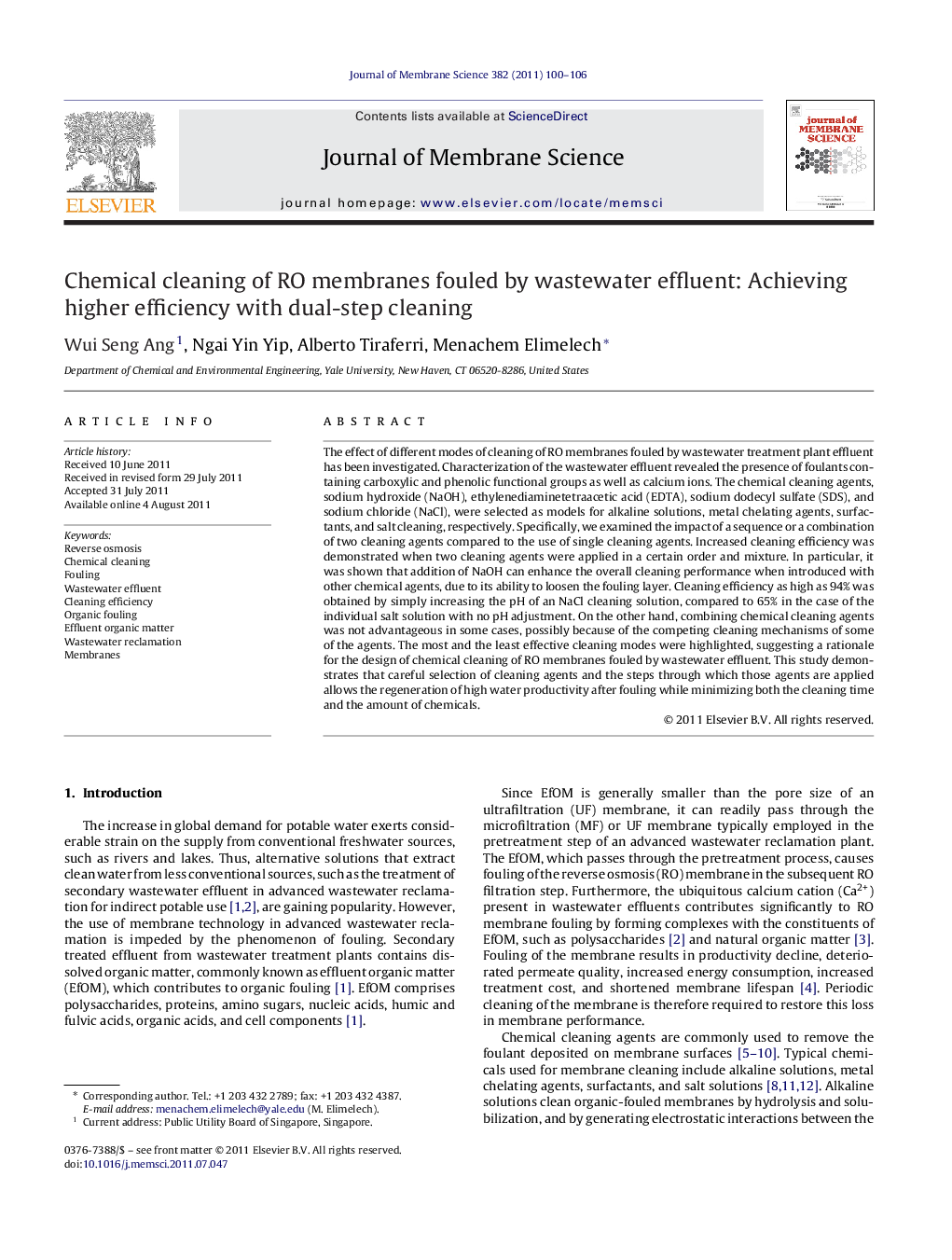| کد مقاله | کد نشریه | سال انتشار | مقاله انگلیسی | نسخه تمام متن |
|---|---|---|---|---|
| 635647 | 1456097 | 2011 | 7 صفحه PDF | دانلود رایگان |

The effect of different modes of cleaning of RO membranes fouled by wastewater treatment plant effluent has been investigated. Characterization of the wastewater effluent revealed the presence of foulants containing carboxylic and phenolic functional groups as well as calcium ions. The chemical cleaning agents, sodium hydroxide (NaOH), ethylenediaminetetraacetic acid (EDTA), sodium dodecyl sulfate (SDS), and sodium chloride (NaCl), were selected as models for alkaline solutions, metal chelating agents, surfactants, and salt cleaning, respectively. Specifically, we examined the impact of a sequence or a combination of two cleaning agents compared to the use of single cleaning agents. Increased cleaning efficiency was demonstrated when two cleaning agents were applied in a certain order and mixture. In particular, it was shown that addition of NaOH can enhance the overall cleaning performance when introduced with other chemical agents, due to its ability to loosen the fouling layer. Cleaning efficiency as high as 94% was obtained by simply increasing the pH of an NaCl cleaning solution, compared to 65% in the case of the individual salt solution with no pH adjustment. On the other hand, combining chemical cleaning agents was not advantageous in some cases, possibly because of the competing cleaning mechanisms of some of the agents. The most and the least effective cleaning modes were highlighted, suggesting a rationale for the design of chemical cleaning of RO membranes fouled by wastewater effluent. This study demonstrates that careful selection of cleaning agents and the steps through which those agents are applied allows the regeneration of high water productivity after fouling while minimizing both the cleaning time and the amount of chemicals.
Figure optionsDownload high-quality image (405 K)Download as PowerPoint slideHighlights
► High cleaning efficiency is achieved by cleaning fouled RO membranes using dual-step cleaning protocols.
► High-pH cleaning solutions aid other cleaning agents by breaking up the fouling layer matrix.
► Dual-step cleaning protocols are only effective if the two agents act synergistically.
► Near complete water flux recovery is achieved by combining NaCl and NaOH as cleaning agents.
► Strategic pairing of cleaning agents minimizes chemical consumption during cleaning of fouled RO membranes.
Journal: Journal of Membrane Science - Volume 382, Issues 1–2, 15 October 2011, Pages 100–106